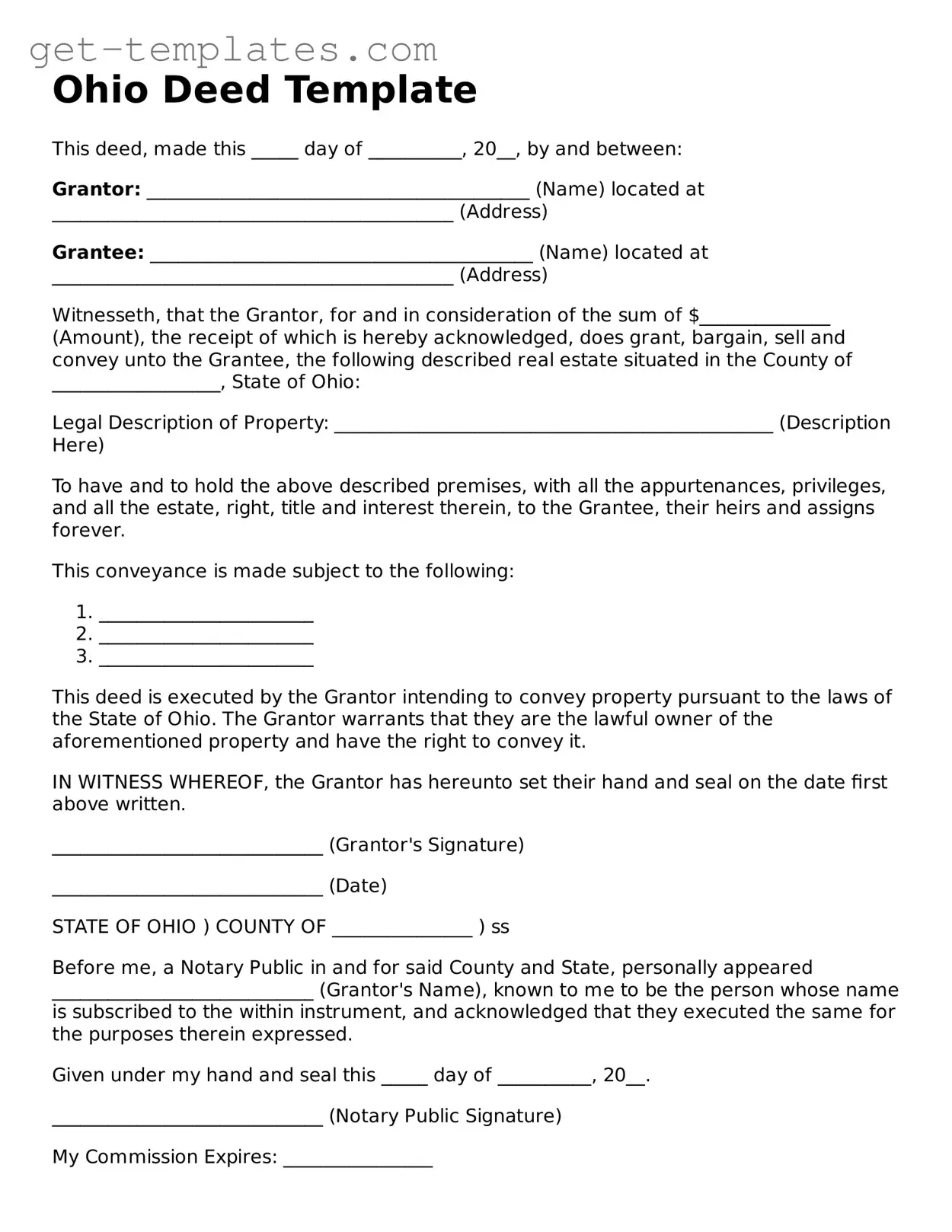Ohio Deed Template
This deed, made this _____ day of __________, 20__, by and between:
Grantor: _________________________________________ (Name)
located at ___________________________________________ (Address)
Grantee: _________________________________________ (Name)
located at ___________________________________________ (Address)
Witnesseth, that the Grantor, for and in consideration of the sum of $______________ (Amount), the receipt of which is hereby acknowledged, does grant, bargain, sell and convey unto the Grantee, the following described real estate situated in the County of __________________, State of Ohio:
Legal Description of Property: _______________________________________________ (Description Here)
To have and to hold the above described premises, with all the appurtenances, privileges, and all the estate, right, title and interest therein, to the Grantee, their heirs and assigns forever.
This conveyance is made subject to the following:
- _______________________
- _______________________
- _______________________
This deed is executed by the Grantor intending to convey property pursuant to the laws of the State of Ohio. The Grantor warrants that they are the lawful owner of the aforementioned property and have the right to convey it.
IN WITNESS WHEREOF, the Grantor has hereunto set their hand and seal on the date first above written.
_____________________________ (Grantor's Signature)
_____________________________ (Date)
STATE OF OHIO )
COUNTY OF _______________ ) ss
Before me, a Notary Public in and for said County and State, personally appeared ____________________________ (Grantor's Name), known to me to be the person whose name is subscribed to the within instrument, and acknowledged that they executed the same for the purposes therein expressed.
Given under my hand and seal this _____ day of __________, 20__.
_____________________________ (Notary Public Signature)
My Commission Expires: ________________
